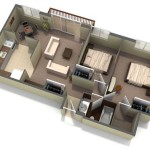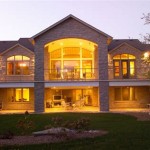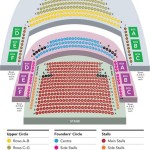DFD House Plans 1897: A Glimpse into Victorian Architecture
The year 1897 falls squarely within the late Victorian era, a period known for its distinctive architectural styles. Understanding house plans from this period requires delving into the societal influences, technological advancements, and design trends that shaped homes of the time. Examining DFD house plans from 1897 offers a fascinating glimpse into the lives and aspirations of those residing in the late Victorian period.
Key Features of Victorian Architecture (1837-1901)
Victorian architecture, encompassing various styles like Queen Anne, Gothic Revival, and Romanesque Revival, boasts several defining characteristics:
- Ornate Detailing: Intricate woodwork, decorative gables, bay windows, and stained glass exemplify the elaborate ornamentation common in Victorian homes.
- Steeply Pitched Roofs: Complex rooflines with multiple gables and dormers were a prominent feature.
- Asymmetrical Facades: Victorian houses often featured unbalanced designs, adding to their visual interest.
- Wraparound Porches: These provided shaded outdoor spaces and enhanced the home's social aspect.
- Emphasis on Verticality: Tall windows and prominent chimneys emphasized the height of the structure.
DFD House Plans 1897: Speculation and Context
While "DFD" lacks clear identification as an architect or design firm in the context of 1897 house plans, it's plausible that it represented a local builder, a design catalog code, or even personalized initials incorporated into commissioned plans. Deeper research into historical architectural records, local archives, or building permits from the period might provide further clues.
Technological Advancements Influencing 1897 House Plans
Technological progress significantly influenced house design during this era. The following advancements played a crucial role:
- Mass-produced Nails: Facilitated quicker and more efficient construction techniques.
- Improved Sawmills: Enabled the production of standardized lumber, leading to more uniform building practices.
- Indoor Plumbing: Became increasingly common in urban areas, altering the layout and functionality of homes.
- Gas Lighting: Offered a brighter and more convenient alternative to oil lamps and candles.
- Central Heating: While not yet universally adopted, furnaces and radiators began appearing in more affluent homes, impacting design considerations.
Social Influences on 1897 House Designs
Social factors also played a significant role in shaping the homes of 1897. The following factors were particularly influential:
- Rising Middle Class: The growing middle class sought homes that reflected their newfound prosperity and status.
- Emphasis on Domesticity: Homes were viewed as sanctuaries and a reflection of the family's values.
- Servant Culture: Many middle and upper-class homes included designated spaces for live-in domestic staff.
- Increased Urbanization: Population growth in urban centers led to the construction of row houses and smaller detached homes on narrower lots.
Analyzing DFD House Plans 1897: Potential Features
Hypothetically, a DFD house plan from 1897 might feature elements typical of the Victorian era, adapted to the specific region and the client's socio-economic status. Here are some potential features such plans might include:
- A Parlor: A formal reception room for entertaining guests.
- A Separate Dining Room: Reflecting the importance of formal meals.
- A Kitchen with a Pantry: Designed for food storage and preparation.
- Bedrooms on Upper Levels: Clearly separating private and public spaces.
- A Front Porch: Providing a space for relaxation and socializing.
- Possibly a Back Porch or Service Area: For laundry and other household tasks.
Researching Original DFD Plans
Finding original DFD house plans from 1897 would require dedicated research. Exploring local historical societies, architectural archives, university libraries, and online databases of historical blueprints could potentially yield valuable results. Genealogical resources may also offer clues if the original homeowners or builders can be identified.
Interpreting Historical House Plans
Interpreting historical house plans requires careful attention to detail and an understanding of architectural conventions of the period. Scale, notations, and symbols used on the plans provide invaluable insights into the intended design and construction. Examining similar period houses can aid in understanding the context and purpose of various features.
Value of Studying 1897 House Plans
Studying house plans from 1897 provides valuable insights into the lives, values, and technologies of the late Victorian era. These plans offer a glimpse into the social structures, architectural trends, and technological advancements that shaped the built environment of the time. Analyzing these historical documents contributes to a deeper understanding of architectural history and the evolution of domestic spaces.

Ranch House Plan With 3 Bedrooms And 2 5 Baths 1897

Ranch House Plan With 3 Bedrooms And 2 5 Baths 1897

Ranch House Plan With 3 Bedrooms And 2 5 Baths 1897

Ranch House Plan With 3 Bedrooms And 2 5 Baths 1897

Ranch House Plan With 3 Bedrooms And 2 5 Baths 1897

Beautiful Craftsman Style House Plan 1897 Vita Encantata Plans Cottage
%20APS-1816%20Hanover-Small%20lower%20floorplan.jpg?strip=all)
Country House Plan With 4 Bedrooms And 3 5 Baths 6242

Beautiful Craftsman Style House Plan 1897 Vita Encantata Plans

The Sean Paul House Plan Rearrange Rooms Four Bedroom Plans

House Plans Home From The Designers My Account Craftsman Tuscan








